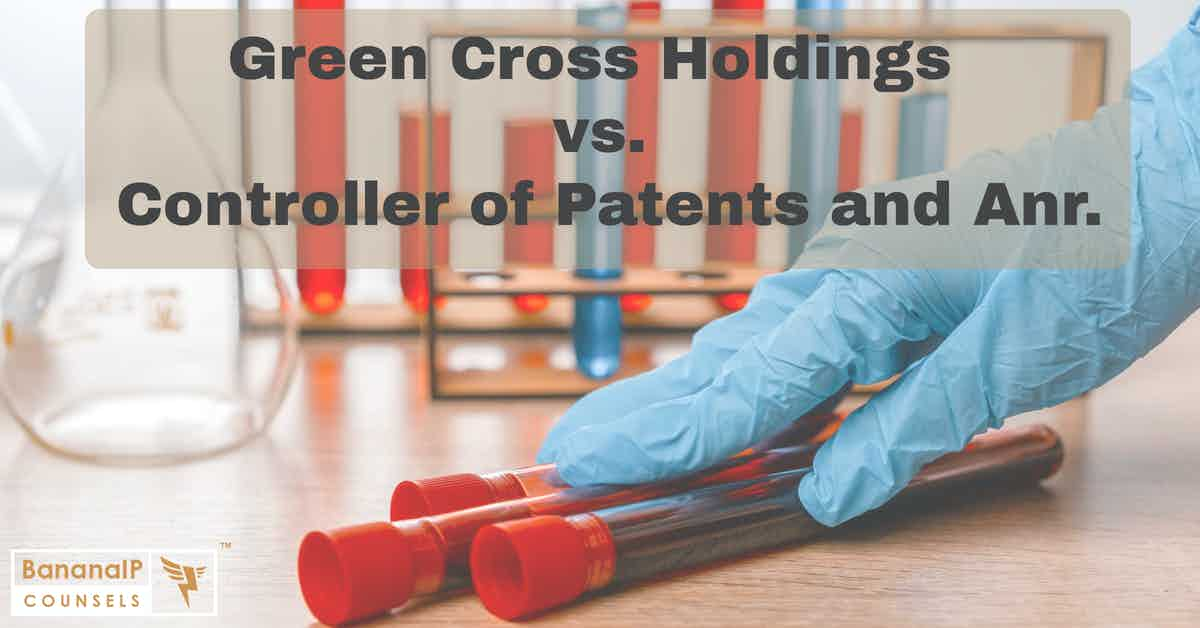This post was first published on 16th July, 2014.
We will today discuss a case in the Indian Patent history that showcases how the IPAB and the IPO analyse the Inventive Step or Obviousness of an invention.
Green Cross Holdings (Appellant) v/s Controller of Patents and Deputy Controller of Patents (Respondents)
Case: This judgment, passed on June 18th, 2014 by the IPAB, was based on an appeal made by Green Cross Holdings against the order made by Deputy Controller of Patents on Aug 13th, 2009, rejecting their application (Appl.no: 1563/DEL/2005) for the invention titled Pharmaceutical preparation of recombinant Factor VIII lyophilized without Albumin as a stabilizer.
Objections raised by Respondents:
- The application was rejected on the grounds that the invention lacked inventive step with respect to the prior art references cited and that it did not constitute an invention under sec 2(1) (j) of the Patents act 1970.
- The Deputy Controller of Patents even pointed out that the claims failed to define a pharmaceutical composition since the product claimed was only a lyophilized recombinant Factor VIII stabilized by a stabilizer composition.
- The applicant’s statement that their lyophilized recombinant Factor VIII was without albumin and thus free of viral infections was not substantiated or supported by the description or submissions.
Appellant’s Arguments:
- The appellant argued that the rejection of the application on the grounds that the invention lacked inventive step in light of the prior art references stands incorrect as the prior art references cited provided different rigorous, time consuming methods to render the composition virus free as against the present invention, which deals with a simple stabilizer composition of amino acids used at a fixed ratio that can replace albumin, rendering them viral free and having comparable activity to a composition with albumin. They added that the experiments and the prior art references provided support that it was not obvious to arrive at a combination of the amino acids used as stabilizer for the pharmaceutical preparation of recombinant Factor VIII of the present invention, free of viral contamination.
- The appellant also stated that the claims were for recombinant Factor VIII and not for human blood derived Factor VIII which is susceptible to viral infection.
- The applicant’s statements that the albumin stabilized recombinant Factor VIII was prone to infection were very well supported by the specification and the submissions thus ruled out one of the objections raised by the Deputy Controller of patents.
Judgment: The Board agreed and upheld the decision made by the Deputy Controller of patents and dismissed the appeal. It noticed that from the specification, it was evident that only the Factor VIII isolated from human blood plasma was susceptible to viral infections and that the recombinant Factor VIII as such were free from infection. It also stated that the commercially available recombinant Factor VIII used albumin or other amino acids for stabilization.
The Board observed that the prior art references cited by the respondent, being the crux of the invention, were not cited by the applicant in the specification. It also pointed out that the prior art references have covered almost all aspects of the invention and have disclosed the use of a mixture of amino acids for the stabilization of Factor VIII rendering them viral free and that the addition of albumin was made optional. Most of these prior art references also disclosed that Factor VIII may be lyophilized for increased stability.
The Board thus remarked that the use of amino acids as stabilizer for recombinant Factor VIII before lyophilization was not novel with respect to the prior art references and that the optimization of the predetermined ratio of the amino acids employed in the present invention to increase the activity would have been obvious for a person skilled in the art. The Board criticized that it is a prima facie case of obviousness as the appellant has obtained the unexpected results by the combination of all prior art references and has not cited them in the specification as prior art.
It was concluded that the invention claimed does not constitute a patentable contribution and affirmed the Deputy Controller’s finding that the invention lacked the inventive step though there was a considerable improvement and utility over prior art as it was within the scope of a person skilled in the art.



